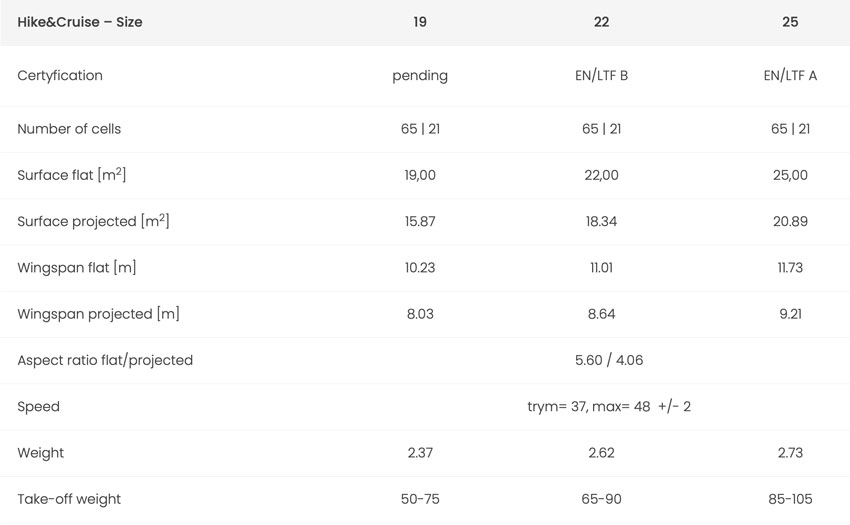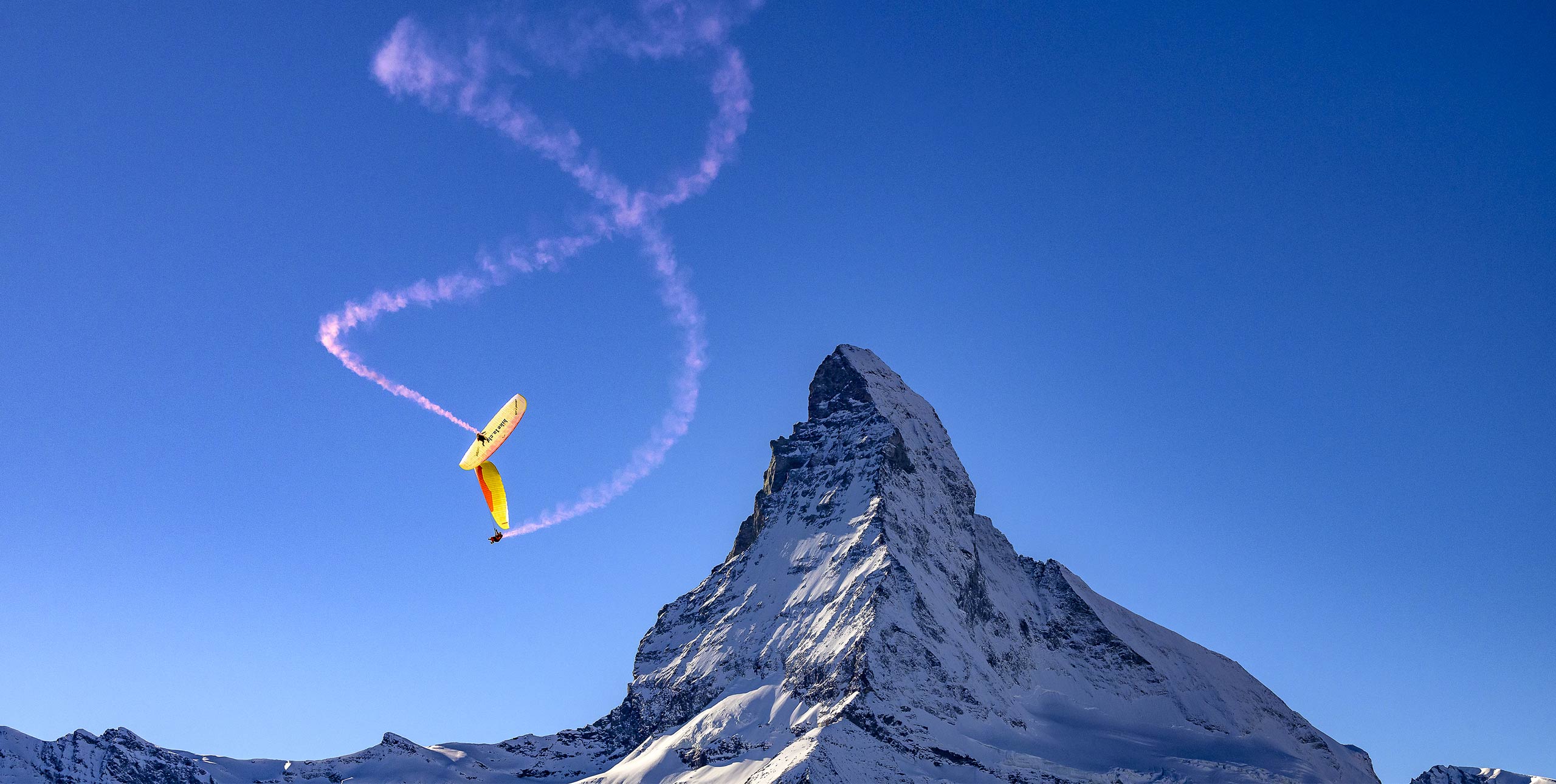
Dudek’s Hike&Cruise has an innovative cell layout: three times more cells in the upper than the lower surface.
Dudek say:
“The idea behind the 3-to-1 technology is to improve the air flow in the upper zones of the canopy that are most crucial for generating lift, while maintaining a low weight. For this purpose, the number of cells on the upper surface of the wing was increased, with simultaneous reduction on the lower surface.
“In order to connect the two surfaces of the canopy with a different number of cells, a special system of internal reinforcements has been designed, based on diagonal supports and a reduced number of ribs (as compared to the classic double-skin paraglider). As a whole, the system relies on a complex and visually attractive set of internal structures.”
It means the wing is lighter than it would have been: It is 2.37kg to 2.73kg across the three sizes, 19m², 22m² and 25m², and also safer, Dudek say, with a wider speed range. It has long brake travel but precise, agile handling even when lightly loaded. It responds well to rear-riser steering, and has bars on the C-risers for this. Dudek say it is auto-stabilising, stopping pitch movements very effectively, and very safe feeling.
The Hike&Cruise is not designed as a wing to simply hike and fly down with. Rather Dudek say with its high level of safety and low weight and pack size it opens up the world of XC and bivouac flights to intermediate recreational pilots.
It has a flat aspect ratio of 5.6, and 65 / 21 cells, and is certified EN B in the 22 (for 65-90kg) and EN A in the 25 (for 85-105kg). The 19 will be for 50-75kg all up, certification is pending on that size.












